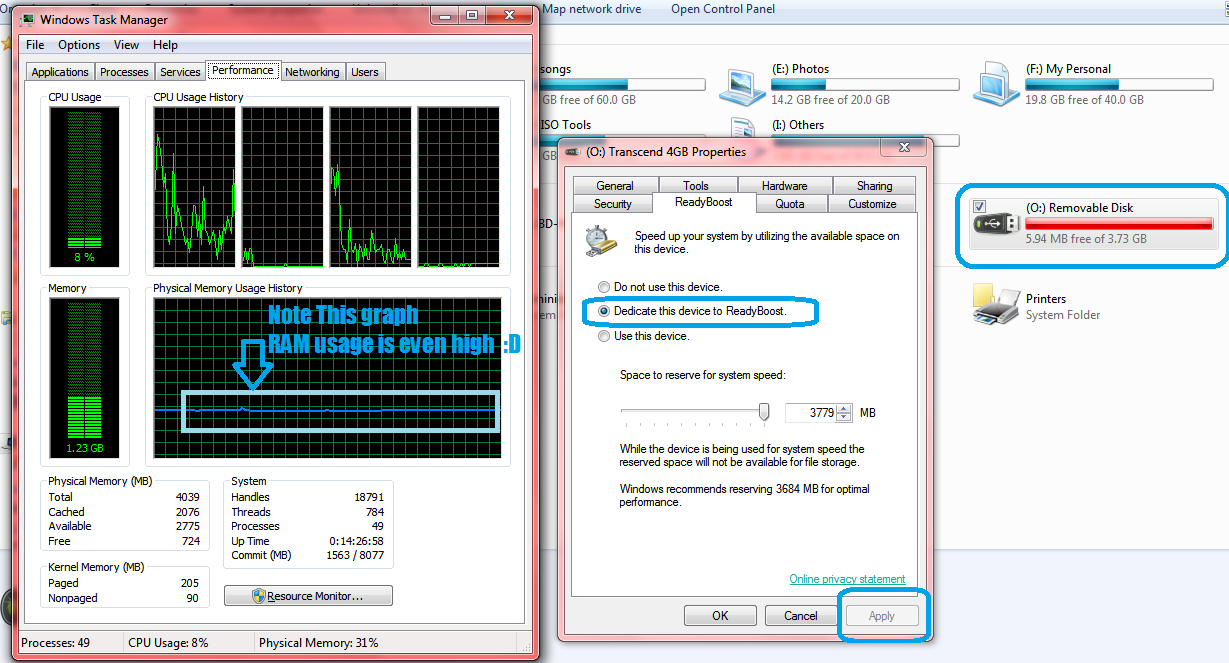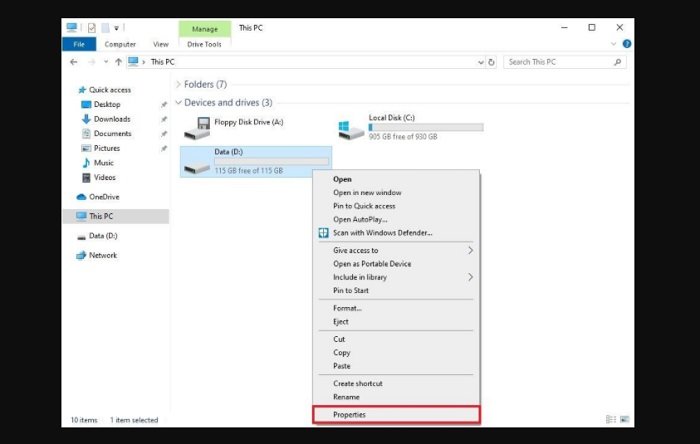
- #What is readyboost cache file driver#
- #What is readyboost cache file portable#
- #What is readyboost cache file windows 7#
- #What is readyboost cache file windows#
However, increasing the physical memory (RAM) from 512 MB to 1 GB (without ReadyBoost) reduced it to 0.8 seconds. In one test case, adding 1 GB of ReadyBoost memory sped up an operation from 11.7 seconds to 2 seconds.
#What is readyboost cache file windows#
Performance Ī system with 512 MB of RAM (the minimum requirement for Windows Vista) can see significant gains from ReadyBoost. ReadyBoost is not available on Windows Server 2008.
#What is readyboost cache file portable#
#What is readyboost cache file driver#
ReadyBoost caches all data as it is being written to the local hard disk: "the Ecache.sys device driver intercepts all reads and writes to local hard disk volumes (C:\, for example), and copies any data being written into the caching file that the service created." SuperFetch pre-populates frequently-read data into ReadyBoost cache, so SuperFetch is necessary for ReadyBoost to perform well.If the system drive (the primary drive, with Windows system files on it) is a solid-state drive (SSD), ReadyBoost is disabled, since reading from that drive would be at least as fast as reading from the ReadyBoost drive.The ReadyBoost cache is created on the root directory of the drive. Because ReadyBoost stores its cache as a file on the root directory of the drive rather than using the flash memory without a file system, the file system must be mounted and assigned a drive letter.One experiment showed reading of flash memory up to 5–10 times faster than Windows Vista due to higher hit rate.

#What is readyboost cache file windows 7#
Windows 7 supports multiple flash drives for ReadyBoost, so performance improvement similar to RAID 0 can be expected.

The initial release of ReadyBoost for Windows Vista supported one device.The performance differences between these file systems are negligible with ReadyBoost. As the ReadyBoost cache is stored as a file, the flash drive must be formatted as FAT32, NTFS, or exFAT in order to have a cache size greater than FAT16's 2 GB filesize limit if the desired cache size is 4 GB (the FAT32 filesize limit) or larger, the drive must be formatted as NTFS or exFAT. Windows 7 also supports the newer exFAT file system. Vista's ReadyBoost supports NTFS, FAT16, and FAT32 from SP1 onwards.The Microsoft Windows Client Performance group recommends a flash-memory-to-system-RAM ratio of between 1:1 and 2.5:1.The device must be capable of 2.5 Mbit/s read speeds for 4 kB random reads spread uniformly across the entire device, and 1.75 Mbit/s write speeds for 512 kB random writes spread uniformly across the device.The device must have an access time of 1 ms or less.Windows 7 allows up to eight devices for a maximum of 256 GB of additional memory, with up to 32 GB on a single storage device.


Flash devices typically are slower than a mechanical hard disk for sequential I/O, so, to maximize performance, ReadyBoost includes logic that recognizes large, sequential read requests and has the hard disk service these requests. This caching applies to all disk content, not just the page file or system DLLs. Using ReadyBoost-capable flash memory ( NAND memory devices) for caching allows Windows Vista and later to service random disk reads with better performance than without the cache.


 0 kommentar(er)
0 kommentar(er)
